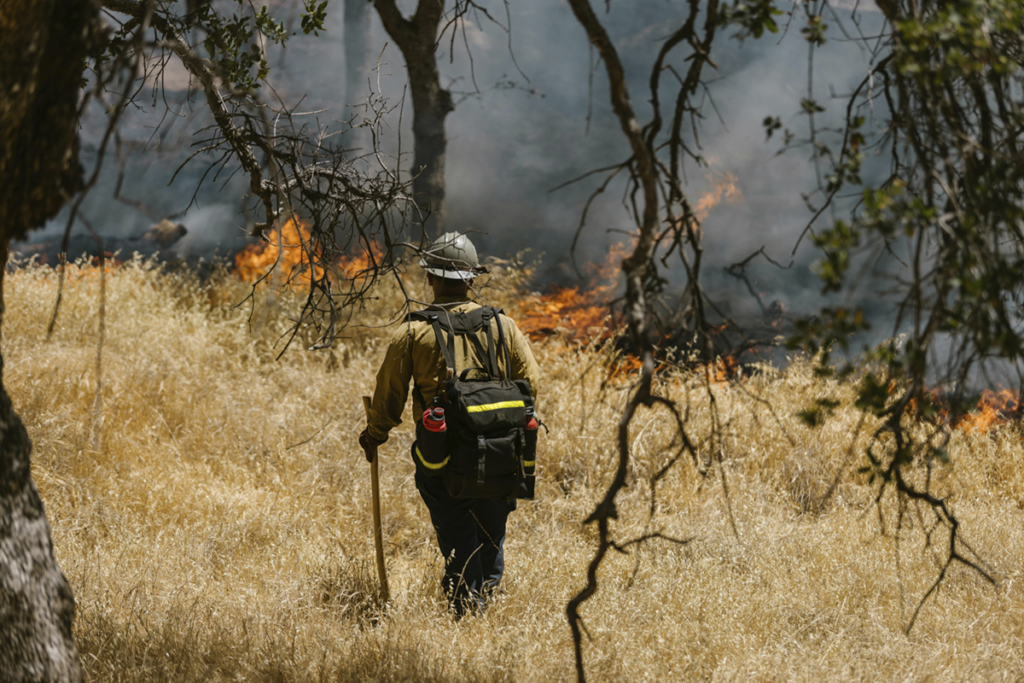*
EarthTalk®
From the Editors of E – The Environmental Magazine
Dear EarthTalk: How can we get better at predicting when and where wildfires will occur so we can adequately mitigate their impact? — R.K., Tarrytown, NY

In recent years, the wildfires incidents have intensified, driven by factors including climate change, land use patterns and increasingly unpredictable weather patterns. As we grapple with the growing risk, efforts to enhance predictive capabilities and mitigate the impact of wildfires have become paramount.
Predicting when and where wildfires will occur demands a sophisticated approach that integrates advanced technology with comprehensive data analysis. Indeed, researchers are leveraging cutting-edge satellite imagery and machine learning algorithms to enhance wildfire prediction models. These technologies allow experts to analyze historical fire data, vegetation patterns, weather trends and terrains in unprecedented detail. By identifying high-risk areas and predicting potential fire behavior, scientists can provide early warnings to at-risk communities and allocate firefighting resources more effectively.
Increased wildfires have also spurred new mitigation strategies. The Wilderness Society stresses three key approaches to reduce wildfire impacts: proactive forest management (controlled burns and selective thinning of vegetation, making forests less susceptible to catastrophic fires), community preparedness (educating residents about fire safety, setting evacuation plans and increasing firefighting infrastructure), and policy reforms (stricter building codes and incentivized sustainable land management practice).
The federal government is also ramping up initiatives. One is the Technology to Reduce the Impact of Wildfires (TRIW) initiative, where federal agencies work together to develop innovative tools like fire-resistant materials, advanced firefighting equipment and real-time communication systems. This not only enhance firefighter safety but also improve response times and coordination during wildfire events.
Private industry is also getting in on the act. One company, Blue Sky Analytics, uses a network of sensors with AI and machine learning to beef up our ability to predict and prevent fires. Drones with infrared cameras can detect hotspots and monitor fire progression in real-time, providing critical data. Sensors deployed across vulnerable landscapes continuously collect data, feeding into models that forecast fire behavior based on current conditions. Such advancements enable authorities to issue timely alerts and deploy resources where they are most needed.
Combining these public and private initiatives with the power of citizen science can make all the difference as to whether fire mitigation succeeds or fails. By integrating field observations with scientific data, experts gain a more comprehensive understanding of wildfire dynamics and its impacts.
CONTACTS: Wilderness Society, www.wilderness.org/articles/blog/3-reasons-wildfires-are-getting-more-dangerous-and-3-ways-make-things-better.
EarthTalk® is produced by Roddy Scheer & Doug Moss for the 501(c)3 nonprofit EarthTalk. See more at https://emagazine.com. To donate, visit https://earthtalk.org. Send questions to: question@earthtalk.org.
Viewers are encouraged to subscribe and join the conversation for more insightful commentary and to support progressive messages. Together, we can populate the internet with progressive messages that represent the true aspirations of most Americans.